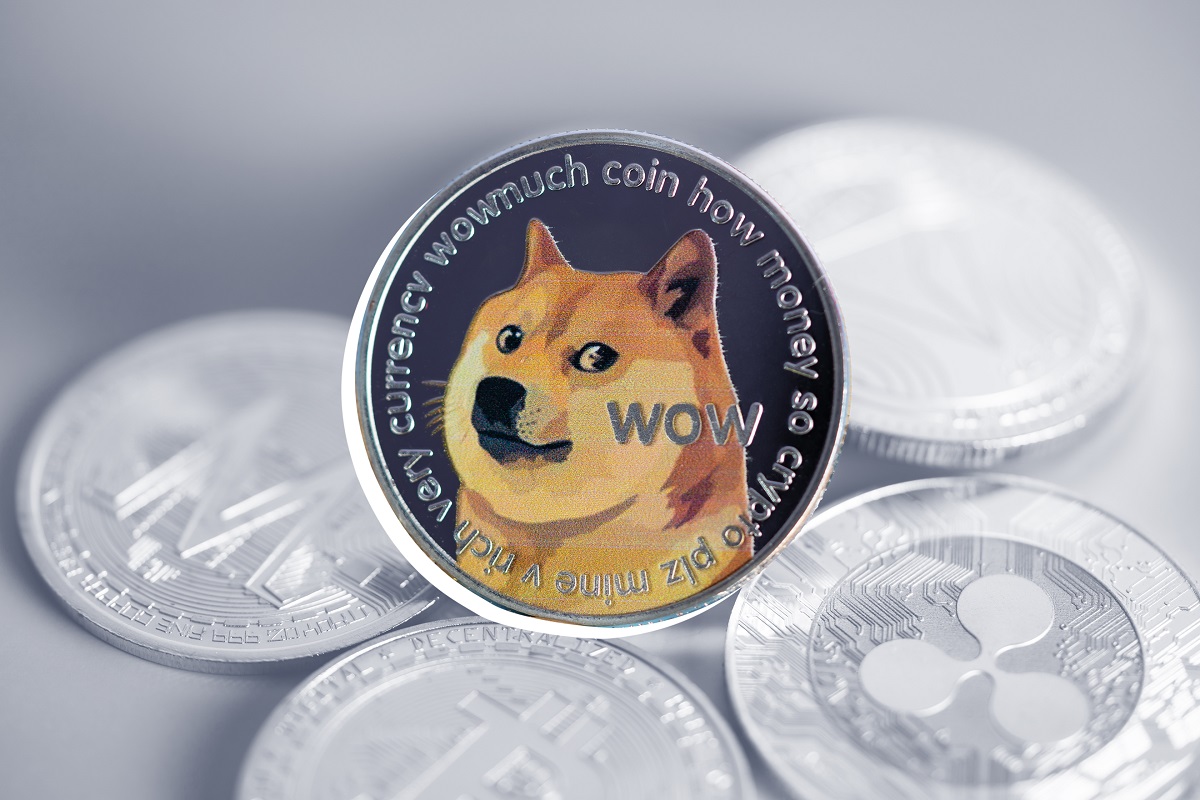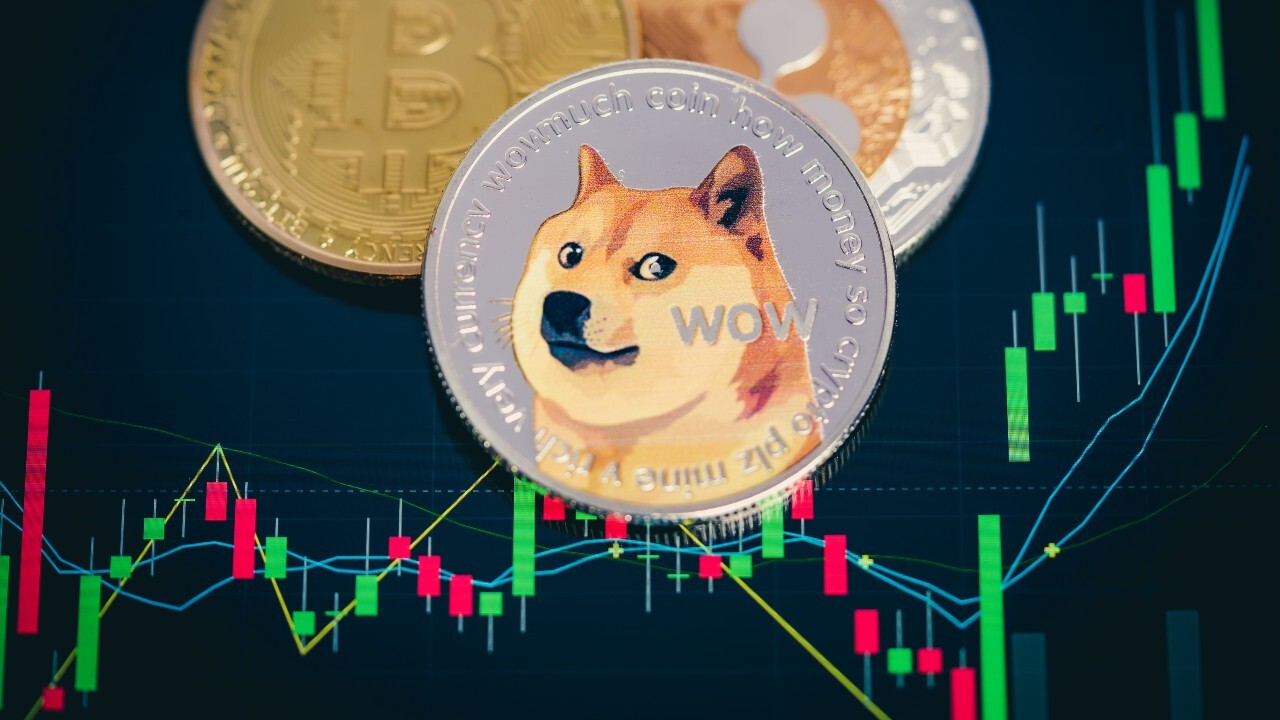Introduction
Dogecoin, a digital cryptocurrency that started as a meme, has gained popularity in recent years. As more people become interested in acquiring Dogecoin, the idea of mining it has become increasingly appealing. But how much Dogecoin can you mine in a day? That’s a question many aspiring miners ask.
Dogecoin mining involves verifying transactions and adding them to the Dogecoin blockchain. Miners use powerful computers to solve complex mathematical problems, and in return, they are rewarded with newly minted Dogecoins. The mining process is vital to the security and functionality of the Dogecoin network.
Several factors affect how much Dogecoin you can mine in a day. These include the processing power of your mining hardware, the mining software you use, the mining pool you join, and the current difficulty of mining Dogecoin. It’s important to understand these factors to estimate your potential mining earnings accurately.
In this article, we will delve into the factors that affect Dogecoin mining and explore how to calculate your mining potential. We will also discuss the hardware and software requirements for mining Dogecoin, as well as the role of mining pools in the process. Additionally, we’ll consider the impact of electricity costs on mining profitability and provide tips for maximizing mining efficiency.
Please note that Dogecoin mining may not be as profitable as it once was due to increased competition and the rising complexity of mining. However, it can still be an exciting and rewarding endeavor for those with the right equipment and knowledge.
What is Dogecoin Mining?
Dogecoin mining is the process of validating and adding new transactions to the Dogecoin blockchain. It is a crucial element of the Dogecoin network, ensuring the security and integrity of the digital currency. Similar to other cryptocurrencies, such as Bitcoin, Dogecoin operates on a decentralized peer-to-peer network, meaning that there is no central authority controlling the transactions.
To mine Dogecoin, miners use powerful computers equipped with specialized hardware, such as graphics processing units (GPUs) or application-specific integrated circuits (ASICs). These devices are optimized to perform the complex mathematical calculations required for mining. The purpose of these calculations is to solve cryptographic puzzles and validate transactions.
When a miner successfully solves a puzzle and verifies a transaction, they are rewarded with a certain amount of newly created Dogecoins. This is the incentive for miners to dedicate their computational resources to securing and maintaining the Dogecoin network.
Dogecoin mining operates on a Proof-of-Work (PoW) algorithm, specifically Scrypt. The Scrypt algorithm differentiates Dogecoin from Bitcoin, as it requires less computational power, making it more accessible for individual miners. However, as the popularity of Dogecoin has grown, mining has become increasingly competitive and challenging.
The Dogecoin network adjusts the difficulty level of mining periodically to ensure that new blocks are added to the blockchain at a relatively constant rate. As more miners join the network, the difficulty increases, making it harder to mine Dogecoins. This system prevents the network from being flooded with new coins and helps to maintain the stability of the cryptocurrency.
While mining Dogecoin can potentially yield financial rewards, it’s important to note that the costs associated with mining, such as electricity and mining equipment, can significantly impact profitability. Additionally, the market value of Dogecoin fluctuates, affecting the overall earning potential of miners.
Understanding the concept of Dogecoin mining is crucial for anyone interested in earning Dogecoins or contributing to the security of the network. In the following sections, we will explore the factors that influence Dogecoin mining and how you can calculate your potential earnings as a Dogecoin miner.
Factors That Affect Dogecoin Mining
Several factors can significantly impact the amount of Dogecoin you can mine in a day. Understanding these factors is crucial for estimating your mining potential accurately. Let’s explore the key elements that influence Dogecoin mining:
- 1. Mining Hardware: The mining hardware you use plays a critical role in determining your mining efficiency. More powerful hardware, such as high-performance GPUs or ASICs specifically designed for Dogecoin mining, will enable you to solve complex mathematical problems faster, increasing your chances of earning more Dogecoins. It’s important to consider the initial investment required for acquiring mining hardware.
- 2. Mining Software: The mining software you choose can also impact your mining capabilities. Different software options offer varying levels of optimization and functionality. Ensure that you select mining software that is compatible with your hardware and provides stable performance. Additionally, some mining software may allow you to customize settings and optimize your mining process.
- 3. Mining Pool: While you can mine Dogecoin individually, joining a mining pool can increase your chances of earning consistent rewards. Mining pools are collaborative groups of miners who combine their computational power to mine Dogecoin collectively. By pooling resources, miners have a higher probability of successfully mining new blocks and earning a share of the rewards. It’s important to research and select a reputable mining pool that offers fair distribution of rewards.
- 4. Difficulty Level: The difficulty level of mining is adjusted periodically by the Dogecoin network. As more miners join the network, the difficulty increases to maintain a consistent rate of block generation. Higher difficulty means that it takes more computational power and time to mine new Dogecoins. It’s essential to keep track of the difficulty level as it directly affects your mining rewards.
- 5. Electricity Costs: The energy consumption of mining operations can significantly impact the profitability of Dogecoin mining. Mining requires substantial computational power, which translates to higher electricity consumption. Depending on your location and the cost of electricity, this expense can eat into your mining earnings. It’s advisable to calculate and consider the electricity costs associated with your mining operation.
- 6. Market Value: The market value of Dogecoin affects the potential profitability of mining. If the value of Dogecoin increases, the rewards you earn from mining become more valuable. Conversely, a decrease in market value can impact the overall profitability of mining Dogecoin. It’s important to keep an eye on the market and make informed decisions based on the current value of Dogecoin.
By taking into account these factors, you can develop a realistic expectation of how much Dogecoin you can mine in a day. It’s essential to continuously evaluate and adjust your mining strategy based on market conditions and the evolving landscape of Dogecoin mining. In the next section, we will explore how to calculate your potential Dogecoin mining earnings.
How to Calculate Dogecoin Mining Potential
Calculating your Dogecoin mining potential allows you to estimate how much Dogecoin you can mine in a given period. While the calculations can be complex, understanding the basic principles will help you set realistic expectations. Here’s a step-by-step guide on how to calculate your Dogecoin mining potential:
- 1. Identify your mining hardware: Determine the specifications of your mining hardware, including its hash rate and power consumption. The hash rate represents the computational power of your hardware, measured in megahashes per second (MH/s) or gigahashes per second (GH/s).
- 2. Assess the mining difficulty: Check the current mining difficulty level of Dogecoin. This information is available on various cryptocurrency websites and mining forums. The mining difficulty is a factor that adjusts to ensure a consistent rate of block generation.
- 3. Calculate your potential hash rate: Estimate your potential hash rate by considering your hardware’s performance and the efficiency of your mining software. This estimation will help determine how many hashes your hardware can generate per second.
- 4. Determine your daily mining rewards: Use an online mining profitability calculator or a Dogecoin mining calculator to estimate your daily mining rewards. These calculators take into account parameters such as hash rate, electricity costs, and current market value to provide an estimate of the Dogecoins you can mine in a day.
- 5. Consider mining pool fees: If you are mining as part of a mining pool, take into account any associated fees. Typically, mining pools charge a small percentage of the rewards earned by miners as a fee for their services.
- 6. Calculate your net mining earnings: Subtract any electricity costs and mining pool fees from your estimated daily mining rewards. This will give you a more accurate picture of the net Dogecoin earnings you can expect from your mining operation.
It’s important to note that the calculations are estimates and can vary based on market conditions, network difficulty, and other factors. Additionally, the market value of Dogecoin can fluctuate significantly, impacting your mining potential and overall earnings. Regularly monitoring and adjusting your mining strategy is crucial to maximizing your Dogecoin mining potential.
By following these steps and being mindful of the various factors that affect Dogecoin mining, you can gain a better understanding of how much Dogecoin you can mine in a day. In the following sections, we will delve into the hardware and software requirements for mining Dogecoin and explore the concept of mining pools.
Hardware Requirements for Dogecoin Mining
Mining Dogecoin requires specialized hardware that can handle the computational demands of the mining process. The right hardware will significantly impact your mining efficiency and potential earnings. Here are the key hardware requirements for mining Dogecoin:
- 1. Graphics Processing Units (GPUs): GPUs are widely used for mining Dogecoin due to their high hash rates and energy efficiency. They are especially effective in mining algorithms like Scrypt, which is used by Dogecoin. Look for GPUs with high memory capacity and suitable cooling systems to ensure optimal performance.
- 2. Application-Specific Integrated Circuits (ASICs): ASICs are specialized mining devices designed specifically for cryptocurrency mining. While ASICs are not as commonly used for Dogecoin mining as they are for Bitcoin mining, there are ASICs available that support Scrypt-based mining. ASICs offer high hash rates and energy efficiency but can be expensive to purchase.
- 3. Central Processing Units (CPUs): While CPUs are not as efficient as GPUs or ASICs for mining Dogecoin, they can still be used for mining on a smaller scale. CPUs are the primary processing units of computers and can contribute to the mining process. However, due to their lower hash rates compared to GPUs and ASICs, CPU mining is less profitable.
- 4. Power Supply Units (PSUs): A reliable and efficient power supply unit is essential to support your mining hardware. Consider the power consumption of your mining equipment and ensure that the PSU can handle the required load. Investing in a high-quality PSU will help reduce the risk of power failures and ensure a stable mining operation.
- 5. Cooling Systems: Mining generates a significant amount of heat, which can affect the performance and longevity of your hardware. Proper cooling systems, such as fans or liquid cooling solutions, are critical for maintaining optimal temperatures. Adequate ventilation in your mining setup is also essential to prevent overheating.
- 6. Storage Space: You will need storage space to install the mining software and store the Dogecoin blockchain. Ensure that you have enough storage capacity to accommodate the mining software and any future blockchain updates.
When choosing your mining hardware, consider factors such as upfront costs, hash rates, power consumption, and availability. Research and compare different hardware options to find the best fit for your budget and mining goals. Keep in mind that hardware requirements may evolve over time as mining difficulty increases and technology advances.
In addition to the hardware, it’s important to have a stable and reliable internet connection to ensure smooth communication with the Dogecoin network. A high-speed internet connection will minimize connectivity issues and help optimize your mining efficiency.
By meeting the hardware requirements for mining Dogecoin, you can position yourself for successful and profitable mining operations. In the next section, we will explore the software requirements for mining Dogecoin, which are equally important for a smooth and efficient mining experience.
Software Requirements for Dogecoin Mining
In addition to the hardware, mining Dogecoin requires specialized software that facilitates the mining process and allows you to connect to the Dogecoin network. The right mining software will provide you with the necessary tools and features to optimize your mining performance. Here are the key software requirements for mining Dogecoin:
- 1. Mining Software: To mine Dogecoin, you’ll need to choose mining software that is compatible with your hardware and the Scrypt algorithm used by Dogecoin. Popular mining software options for Dogecoin include CGMiner, EasyMiner, and MultiMiner. These software options typically offer features such as pool mining support, monitoring tools, and customization options.
- 2. Dogecoin Wallet: A Dogecoin wallet is required to store and manage your mined Dogecoins. Mining software often allows you to configure your mining rewards to be sent directly to your wallet. There are different wallet options available, including desktop wallets, online wallets, and hardware wallets. It’s essential to choose a secure and reliable wallet that suits your needs.
- 3. Operating System (OS): Most mining software is compatible with popular operating systems such as Windows, macOS, and Linux. Ensure that your chosen mining software is supported by your preferred operating system. It’s also important to keep your operating system up to date with the latest security patches and updates.
- 4. Internet Connectivity: A stable and reliable internet connection is crucial for mining Dogecoin. Mining software requires constant communication with the Dogecoin network to receive mining work and submit completed blocks. A high-speed internet connection will minimize connectivity issues and ensure efficient mining operations.
- 5. Security Software: Protecting your mining operation and your digital assets is essential. It’s advisable to have security software, such as anti-malware and firewall solutions, installed on your mining devices to prevent unauthorized access and potential security threats. Regularly update and maintain your security software for optimal protection.
When selecting mining software, consider factors such as user-friendliness, stability, and compatibility with your hardware and operating system. It’s also beneficial to explore user reviews and feedback to gauge the software’s performance and reliability.
Before setting up your mining software, ensure that you have a fully synchronized Dogecoin blockchain. The synchronization process can take some time as the software downloads and verifies the entire blockchain. Once synchronized, your mining software will be able to access the most up-to-date information from the Dogecoin network.
By meeting the software requirements for mining Dogecoin, you can ensure a smooth and efficient mining experience. In the next section, we will explore the concept of mining pools and their role in Dogecoin mining.
Mining Pools and Dogecoin Mining
Mining Dogecoin individually can be a daunting task, especially with the increasing difficulty and competition in the mining landscape. That’s where mining pools come into play. Mining pools offer a collaborative approach to mining, allowing multiple miners to combine their computing power and increase their chances of successfully mining new blocks. Here’s how mining pools play a role in Dogecoin mining:
What is a Mining Pool?
A mining pool is a group of miners who work together and pool their resources to solve complex mathematical problems. By pooling their computational power, miners have a higher probability of successfully mining new blocks and earning a share of the rewards. Mining pools provide a more consistent and predictable stream of income compared to individual mining, where the chance of mining a block can be infrequent.
Advantages of Joining a Mining Pool
There are several benefits of joining a mining pool for Dogecoin mining:
- Increased Mining Efficiency: By combining resources with other miners in a pool, you can collectively solve more blocks, making your mining operation more efficient and maximizing your chances of earning rewards.
- Steady Stream of Income: Mining pools distribute rewards more evenly among participants based on their contribution, providing a more regular and predictable income stream compared to individual mining, which can result in sporadic income.
- Reduced Mining Variance: Mining in a pool reduces the variance in earning rewards, meaning that you are more likely to receive a consistent share of the rewards over time, instead of waiting for a large reward that may take longer to achieve through individual mining.
- Access to Mining Support: Mining pools often provide support and resources to their members, including mining software configuration assistance and troubleshooting guidance. This can be especially helpful for new miners or those who are less experienced in managing mining operations.
Choosing the Right Mining Pool
When selecting a mining pool for Dogecoin mining, consider the following factors:
- Pool Reputation: Choose a mining pool with a good reputation and positive reviews from the mining community. Look for well-established pools with a solid track record of consistent payouts and reliable operations.
- Pool Fees: Mining pools usually charge a small fee, which is deducted from the rewards earned by participants. Consider the fee structure and ensure that it is reasonable and competitive.
- Pool Size and Hashrate Distribution: Larger mining pools with a higher hashrate generally offer more stable and consistent rewards. However, smaller pools may provide more individual rewards if they find blocks less frequently. It’s a trade-off between stability and potential earning variance.
- Payment Scheme: Different mining pools have different payment schemes, such as pay-per-share (PPS) or proportional. Understand the payment scheme and how it aligns with your mining goals and preferences.
Joining a mining pool can enhance your Dogecoin mining experience by increasing your chances of earning rewards and providing a more stable income stream. It’s important to research and choose a reputable and reliable mining pool that aligns with your mining objectives and preferences.
With a deeper understanding of mining pools and their role in Dogecoin mining, we can now proceed to the next section, which explores how to mine Dogecoin and the steps involved in the process.
How to Mine Dogecoin
Mining Dogecoin involves a series of steps to set up your mining operation and start earning Dogecoins. Here is a step-by-step guide on how to mine Dogecoin:
- 1. Set up a Dogecoin Wallet: Before you begin mining, you will need a Dogecoin wallet to store your mined coins. Choose a wallet that suits your needs, such as a desktop wallet, online wallet, or hardware wallet. Ensure that the wallet is secure and compatible with Dogecoin.
- 2. Obtain Mining Hardware: Acquire the necessary mining hardware, such as GPUs or ASICs, that meets the requirements for Dogecoin mining. Consider factors such as hash rate, power consumption, and cost when selecting your mining hardware. Set up the hardware according to the manufacturer’s instructions.
- 3. Choose Mining Software: Select mining software that is compatible with your mining hardware and the Dogecoin network. Popular mining software options for Dogecoin include CGMiner, EasyMiner, and MultiMiner. Install the mining software on your mining rig and configure it according to your preferences.
- 4. Join a Mining Pool: Consider joining a Dogecoin mining pool to increase your chances of earning rewards regularly. Research and select a reputable mining pool that aligns with your mining goals. Register an account with the mining pool and follow their instructions to connect your mining software to the pool’s servers.
- 5. Configure Mining Software: Set up your mining software by providing the necessary information required by the mining pool, such as your pool username and password. Configure the mining software to connect to the pool and start mining. Adjust any additional settings, such as intensity or temperature limits, based on your hardware specifications.
- 6. Monitor and Optimize: Monitor the performance of your mining operation regularly. Keep an eye on your mining software’s statistics to ensure that your rig is mining efficiently and contributing to the pool’s collective efforts. Optimize your mining settings if necessary to maximize your mining potential and minimize any issues or glitches.
- 7. Receive and Manage Rewards: As you mine Dogecoins, the pool will distribute rewards based on your contribution. The timing and method of payment depend on the mining pool’s payment scheme. Ensure that you have provided your Dogecoin wallet address to the pool so that you can receive your earned Dogecoins. Regularly check your wallet balance and manage your rewards accordingly.
Mining Dogecoin can be a rewarding and exciting venture, but it’s important to keep in mind that mining may not be as profitable as it once was due to increased competition. It’s crucial to regularly evaluate the profitability of your mining operation, considering factors such as electricity costs and market value. Make adjustments to your mining strategy as needed to optimize your earnings and stay up to date with the evolving landscape of Dogecoin mining.
As you gain experience and knowledge, you can explore advanced mining techniques and experiment with different mining software and hardware to further enhance your mining efficiency. Remember to stay informed about the latest developments in Dogecoin mining to make informed decisions and adapt to the changing dynamics of the cryptocurrency market.
With these steps in mind, you are now equipped to embark on your Dogecoin mining journey. In the next section, we will discuss the impact of electricity costs on Dogecoin mining and strategies for maximizing mining efficiency.
Dogecoin Mining and Electricity Costs
When engaging in Dogecoin mining, it’s essential to consider the impact of electricity costs on your mining profitability. Mining cryptocurrencies like Dogecoin require a significant amount of computational power, which translates into substantial electricity consumption. Here are some key considerations regarding electricity costs in Dogecoin mining:
Electricity Consumption:
The energy consumption of your mining hardware directly affects your electricity costs. More powerful hardware, such as GPUs or ASICs, will consume more energy. It’s important to understand the power consumption specifications of your mining equipment and calculate the amount of electricity consumed during the mining process. This information can be obtained from the manufacturer or by using specialized tools to measure power usage.
Electricity Rates:
The cost of electricity varies depending on your location and utility provider. Review your electricity bill or contact your utility company to determine the cost per kilowatt-hour (kWh) you are charged. The electricity rate plays a significant role in calculating your mining expenses. Higher electricity rates can eat into your mining profits, affecting the overall profitability of mining Dogecoin.
Calculating Electricity Costs:
To estimate your electricity costs for Dogecoin mining, you need to know the power consumption of your mining hardware and the duration of your mining operation. Multiply the power consumption by the number of hours you mine each day, and then multiply that by the electricity rate per kWh. This calculation will give you an approximate idea of how much you are spending on electricity.
Optimizing Electricity Usage:
To maximize your mining efficiency and minimize electricity costs, consider the following strategies:
- Energy-Efficient Hardware: Choose mining hardware that balances performance with energy efficiency. Energy-efficient GPUs or ASICs can reduce overall power consumption and help lower electricity costs.
- Mining Software Optimization: Fine-tune your mining software and hardware settings to optimize their performance and reduce power consumption. Adjusting parameters such as fan speeds, GPU voltages, and clock speeds can help achieve a balance between performance and energy efficiency.
- Energy-Saving Options: Utilize power-saving options provided by your operating system and hardware. These settings can help reduce power consumption during idle periods or when the mining rig is not actively mining.
- Off-Peak Mining: Depending on your electricity plan, mining during off-peak hours when electricity rates are lower can help minimize costs. Check with your utility provider to determine if off-peak rates are available.
- Alternative Energy Sources: Consider harnessing renewable energy sources, such as solar or wind power, to reduce your reliance on grid-supplied electricity. By utilizing clean energy, you can lower your environmental impact and potentially reduce electricity costs.
Understanding and managing electricity costs in Dogecoin mining is crucial for maintaining profitability. It’s important to regularly monitor your electricity consumption and expenses to make necessary adjustments to your mining strategy. Keep in mind that market conditions and mining difficulty can impact your profitability as well. By balancing electricity costs with mining efficiency, you can optimize your earnings in the long run.
In the next section, we will explore Dogecoin mining profitability and discuss tips for maximizing mining efficiency.
Dogecoin Mining Profitability
Dogecoin mining profitability refers to the potential financial gains from mining Dogecoins. Several factors influence mining profitability, and it’s crucial to assess these factors to determine the viability and potential returns of your mining operation. Here are key considerations for evaluating Dogecoin mining profitability:
Market Value:
The market value of Dogecoin is a fundamental factor that directly impacts mining profitability. As the market value fluctuates, the value of the Dogecoins you mine will vary. It’s important to keep a close eye on the market and consider the potential future price appreciation or depreciation of Dogecoin. Higher market value increases mining profitability, while lower market value can reduce potential returns.
Mining Difficulty:
Dogecoin mining difficulty is adjusted by the network periodically to maintain a consistent block generation rate. Higher mining difficulty means it requires more computational power and time to mine new Dogecoins. Increased mining difficulty directly affects mining profitability by reducing the number of Dogecoins mined over a given period. Lower mining difficulty can result in higher potential earnings.
Electricity Costs:
The cost of electricity is a significant factor that can impact mining profitability. High electricity costs can significantly reduce potential returns, particularly when mining difficulty is high and market values are not favorable. Optimizing electricity usage and considering energy-efficient hardware can help mitigate the impact of electricity costs on profitability.
Hardware and Maintenance Costs:
Hardware costs and maintenance expenses should be factored into assessing mining profitability. The initial investment in mining hardware can be significant, and ongoing maintenance costs, such as equipment upgrades and replacements, should be considered. These costs reduce potential profits and must be evaluated when determining the overall mining profitability.
Mining Pool Fees:
If you choose to mine as part of a mining pool, it’s important to account for any fees associated with participating in the pool. Mining pool fees typically range from 1% to 4%, and these fees will directly impact the overall profitability of your mining operation. Consider the fee structure when estimating your potential mining earnings.
To evaluate Dogecoin mining profitability, you can use online mining profitability calculators. These calculators take into account factors such as hash rate, electricity costs, mining difficulty, and market value to provide estimates of potential earnings. However, keep in mind that mining profitability is subject to change due to market dynamics and network conditions.
It’s important to regularly review and analyze the profitability of your mining operation. Adjust your mining strategy as needed to maintain profitability in the ever-changing landscape of Dogecoin mining. Stay informed about market trends, network updates, and mining advancements to make informed decisions and optimize your potential earnings.
In the next section, we will discuss tips for maximizing Dogecoin mining efficiency, allowing you to make the most of your mining operation.
Tips for Maximizing Dogecoin Mining Efficiency
Maximizing Dogecoin mining efficiency is crucial to optimize your mining operation and increase potential earnings. Here are some tips to help you enhance your mining efficiency:
- 1. Choose the Right Hardware: Selecting energy-efficient hardware with high hash rates will improve your mining efficiency. Look for GPUs or ASICs specifically designed for mining Dogecoin. Consider factors such as power consumption, hash rate, and cost when choosing your mining equipment.
- 2. Optimize Mining Software: Fine-tune your mining software settings to achieve the best performance. Adjust variables like GPU clock speeds, fan speeds, and temperature limits according to your hardware specifications. Experiment with different mining software or configurations to find the optimal settings for your mining operation.
- 3. Monitor and Maintain Hardware: Regularly monitor the performance of your mining hardware. Check for any signs of overheating or malfunctioning components. Keeping your hardware clean and properly cooled will ensure optimal performance and prevent downtime due to hardware failures.
- 4. Join a Reliable Mining Pool: Participating in a reputable and reliable mining pool can increase your chances of earning consistent rewards. Choose a mining pool with a good reputation and fair reward distribution. Ensure that the pool’s infrastructure can handle high volumes of traffic and has a stable connection to minimize downtime.
- 5. Stay Updated with Dogecoin News: Stay informed about Dogecoin developments, market trends, and network updates. Regularly check official Dogecoin forums, social media, and news websites for relevant information. Being up to date with news and developments can help you anticipate changes that may impact your mining operation.
- 6. Optimize Electricity Usage: Minimize electricity costs by optimizing energy consumption. Utilize energy-saving features in your mining hardware and operating system. Consider mining during off-peak hours when electricity rates may be lower. Explore options for renewable energy sources to reduce your environmental footprint and potentially lower electricity costs.
- 7. Assess Mining Profitability: Regularly evaluate the profitability of your mining operation by considering factors such as electricity costs, market value, and mining difficulty. Use online mining profitability calculators to estimate potential earnings based on current parameters. Adjust your mining strategy or consider alternative coins to mine based on changing market conditions.
- 8. Practice Risk Management: Set realistic goals and avoid overextending your mining operation beyond your financial capacity. Mining profitability can fluctuate, and it’s important to have a risk management plan in place. Consider factors such as hardware costs, electricity costs, and potential returns before scaling up your mining operation.
By implementing these tips, you can maximize the efficiency of your Dogecoin mining operation. Regularly reassess and adapt your strategies to ensure profitability in the ever-evolving cryptocurrency mining landscape. Keep in mind that mining can be a competitive and financially volatile activity, so it’s important to stay informed, be flexible, and manage your risks wisely.
With these tips in mind, you are well-equipped to optimize your Dogecoin mining efficiency. In the next section, we will wrap up the article by summarizing the key points discussed and reinforcing the importance of staying informed and adaptable in the world of Dogecoin mining.
Conclusion
Dogecoin mining can be a rewarding and exciting venture, but it requires careful consideration of various factors to maximize your potential earnings. In this article, we explored the process of Dogecoin mining, including the hardware and software requirements, factors that affect mining, and tips for optimizing efficiency. Here are the key takeaways from our discussion:
– Dogecoin mining involves verifying transactions and adding them to the Dogecoin blockchain, and it requires specialized hardware and software.
– Factors such as mining hardware, software, mining pools, mining difficulty, electricity costs, and market value directly impact how much Dogecoin you can mine in a day. Understanding and managing these factors is crucial for estimating potential earnings accurately.
– Joining a mining pool can increase your chances of earning consistent rewards and reduce mining variances. Research reputable mining pools and consider their fee structures before joining.
– Energy consumption and electricity costs play a significant role in mining profitability. Selecting energy-efficient hardware, optimizing mining software, and considering off-peak mining can help minimize electricity costs and boost overall profitability.
– Regularly evaluating the profitability of your mining operation and staying informed about market trends and network updates are crucial for making informed decisions.
– Maximizing mining efficiency requires choosing the right hardware, optimizing mining software, monitoring and maintaining hardware, and staying updated with Dogecoin news.
It’s important to remember that Dogecoin mining is a dynamic and competitive field. Factors such as market value, mining difficulty, and electricity costs can fluctuate, affecting mining profitability. Flexibility, adaptability, and staying informed are key to success in the world of Dogecoin mining. Regularly reassess your mining strategies, adjust your hardware and software configurations, and stay updated with industry developments to optimize your mining efficiency and potential earnings.
By following the tips and guidance provided in this article, you are equipped with the knowledge and tools to embark on your Dogecoin mining journey. Stay vigilant, monitor your mining operation, and adapt to changing circumstances to make the most of your mining efforts. Happy mining!

























